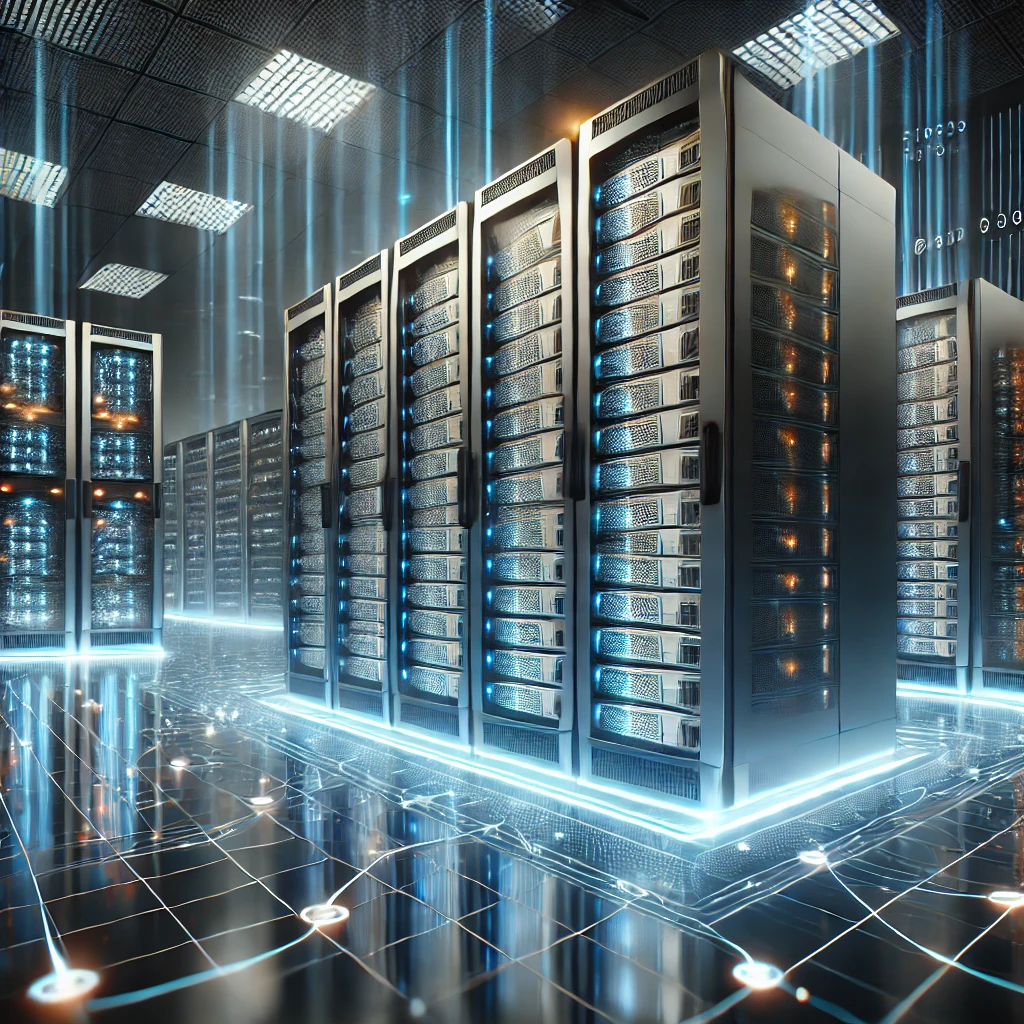
21In today’s digital landscape, data management is crucial for businesses of all sizes. The backbone of effective data handling lies in the strategic use of servers and disk arrays. These technologies form the foundation of modern IT infrastructures, enabling organizations to store, process, and access vast amounts of information efficiently.
As companies generate and collect more data than ever before, the need for robust storage solutions has skyrocketed. Servers and disk arrays have evolved to meet these growing demands, offering scalable and reliable options for businesses to manage their digital assets.
This article delves into the importance of servers and disk arrays in data management. We’ll explore how these technologies work together to create powerful storage systems, their benefits for businesses, and why staying current with server and storage technology is vital for maintaining a competitive edge.
The Evolution of Data Storage
The journey of data storage has been nothing short of remarkable. From the early days of punch cards and magnetic tape to today’s sophisticated disk arrays and cloud storage solutions, the way we store and access information has undergone a dramatic transformation.
From Punch Cards to Hard Drives
In the 1950s and 60s, data storage relied on punch cards and magnetic tape. These methods were slow, cumbersome, and limited in capacity. The introduction of hard disk drives in the late 1950s marked a significant leap forward. Early hard drives, though massive, could store only a fraction of the data that today’s compact drives can hold.
The Rise of RAID Technology
The 1980s saw the development of RAID (Redundant Array of Independent Disks) technology. RAID allowed multiple disk drives to work together, improving both performance and data reliability. This innovation paved the way for more sophisticated storage systems.
Understanding Servers in Data Management
Servers play a pivotal role in modern data management systems. These powerful computers are designed to process requests and deliver data to other computers, known as clients, over a network.
Types of Servers
There are various types of servers, each tailored to specific tasks:
- File servers: Store and distribute files within a network.
- Database servers: Manage and provide access to databases.
- Web servers: Host websites and handle web-based applications.
- Application servers: Run specific applications and deliver them to client computers.
Server Hardware Components
Servers typically consist of several key components:
- CPU (Central Processing Unit): The “brain” of the server, responsible for executing instructions.
- RAM (Random Access Memory): Provides temporary storage for data that the CPU needs to access quickly.
- Storage devices: Hard drives or SSDs that store the operating system, applications, and data.
- Network interface: Allows the server to communicate with other devices on the network.
The Role of Disk Arrays in Data Storage
Disk arrays are sophisticated storage systems that combine multiple disk drives into a single unit. These arrays are crucial for businesses that need to store and manage large volumes of data efficiently.
Components of a Disk Array
A typical disk array consists of:
- Disk drives: Multiple hard disk drives (HDDs) or solid-state drives (SSDs).
- Controllers: Manage the flow of data between the drives and the connected servers.
- Cache memory: Improves performance by temporarily storing frequently accessed data.
- Power supplies: Provide redundant power to ensure continuous operation.
- Cooling systems: Maintain optimal operating temperatures for the components.
RAID Configurations
RAID (Redundant Array of Independent Disks) is a key technology used in disk arrays. It allows multiple drives to work together, improving performance and providing data redundancy. Common RAID levels include:
- RAID 0: Stripes data across multiple drives for improved performance, but offers no redundancy.
- RAID 1: Mirrors data across two drives, providing full redundancy.
- RAID 5: Stripes data and parity information across three or more drives, offering a balance of performance and redundancy.
- RAID 10: Combines mirroring and striping for both high performance and redundancy.
Integrating Servers and Disk Arrays
The integration of servers and disk arrays creates powerful data management systems that can handle the storage and processing needs of modern businesses. This synergy between compute and storage resources is essential for efficient data handling and application performance.
Connection Methods
Servers and disk arrays can be connected in several ways:
- Direct-attached storage (DAS): The disk array is directly connected to the server, typically via SCSI or SAS interfaces.
- Network-attached storage (NAS): The disk array is connected to the network and accessed by servers over standard network protocols like NFS or SMB.
- Storage area network (SAN): A dedicated high-speed network connects servers to disk arrays, usually using Fibre Channel or iSCSI protocols.
Benefits of Integration
Integrating servers and disk arrays offers several advantages:
- Centralized storage management: Administrators can manage all storage resources from a single interface.
- Improved data availability: Redundancy features in both servers and disk arrays enhance overall system reliability.
- Scalability: As storage needs grow, additional disk arrays can be easily added to the network.
- Enhanced performance: High-speed connections between servers and disk arrays reduce data access latency.
Optimizing Performance in Server and Disk Array Systems
To get the most out of your server and disk array infrastructure, it’s crucial to optimize performance. This involves fine-tuning various components and implementing best practices in system configuration and management.
Server Performance Optimization
1. CPU optimization:
- Balance workloads across multiple cores
- Use appropriate processor affinity settings
- Implement proper thermal management
2. Memory management:
- Allocate sufficient RAM for applications
- Use memory caching effectively
- Monitor and manage memory leaks
3. Network optimization:
- Use high-speed network interfaces
- Implement proper network segmentation
- Optimize TCP/IP settings
Disk Array Performance Tuning
1. RAID configuration:
- Choose the appropriate RAID level for your workload
- Balance between performance and redundancy
2. Caching strategies:
- Implement read and write caching
- Use SSD caching for frequently accessed data
3. Data tiering:
- Implement automated tiering to move hot data to faster storage
4. Load balancing:
- Distribute I/O operations across multiple drives
Data Protection and Disaster Recovery
In the world of data management, protecting your information and being prepared for potential disasters is paramount. Servers and disk arrays play a crucial role in implementing robust data protection and disaster recovery strategies.
Backup Strategies
Implementing a comprehensive backup strategy is the first line of defense against data loss:
- Full backups: Complete copies of all data, typically performed weekly or monthly.
- Incremental backups: Only back up data that has changed since the last backup, usually done daily.
- Differential backups: Back up all changes since the last full backup, offering a balance between full and incremental backups.
RAID for Data Protection
RAID configurations in disk arrays provide an additional layer of data protection:
- RAID 1 (Mirroring): Provides a complete duplicate of data for maximum protection.
- RAID 5 (Striping with parity): Offers a good balance of performance and protection against single drive failures.
- RAID 6: Similar to RAID 5 but can withstand two drive failures, offering even greater protection.
The Future of Data Management: Emerging Technologies
The landscape of data management is constantly evolving, with new technologies emerging to address the growing challenges of storing, processing, and analyzing vast amounts of data. Here’s a look at some of the cutting-edge technologies shaping the future of servers and disk arrays:
Software-Defined Storage (SDS)
SDS abstracts storage resources from the underlying hardware:
- Provides greater flexibility in managing storage resources
- Enables easier scaling and management of heterogeneous storage environments
- Facilitates the implementation of storage policies across diverse hardware
NVMe (Non-Volatile Memory Express)
NVMe is a high-performance storage protocol:
- Offers significantly lower latency and higher throughput compared to traditional protocols
- Enables faster data access for applications with high I/O demands
- NVMe over Fabrics extends these benefits to networked storage
Making Informed Decisions: Choosing the Right Solutions
Selecting the appropriate server and disk array solutions for your business is a critical decision that can significantly impact your data management capabilities. Here are some key factors to consider when making your choice:
Assessing Your Needs
Before exploring specific solutions, it’s essential to understand your requirements:
- Data volume: Estimate your current and future storage needs.
- Performance requirements: Determine the level of performance your applications demand.
- Scalability: Consider how your needs might grow over time.
- Budget: Determine what you can afford, including ongoing operational costs.
Considering Total Cost of Ownership (TCO)
Look beyond the initial purchase price and consider:
- Power consumption and cooling costs
- Licensing fees for software and features
- Maintenance and support costs
- Potential downtime and its impact on your business
Conclusion
In today’s data-driven world, effective management of information is crucial for business success. Servers and disk arrays form the backbone of modern data management systems, providing the storage capacity, processing power, and reliability needed to handle ever-growing volumes of data.
As we’ve explored in this article, the landscape of data management is constantly evolving. From the early days of punch cards to today’s sophisticated disk arrays and cloud storage solutions, the way we store and process data has undergone a remarkable transformation.
Lastly, if you’re considering upgrading your infrastructure, don’t overlook the potential value in your existing equipment. Many businesses find that they can sell old corporate servers to offset the cost of new purchases. This not only helps with budgeting, but also contributes to sustainable IT practices by extending the lifecycle of hardware.
By staying informed about the latest developments in server and storage technology and making strategic investments in your data management infrastructure, you’ll be well-equipped to handle the data challenges of today and tomorrow.





